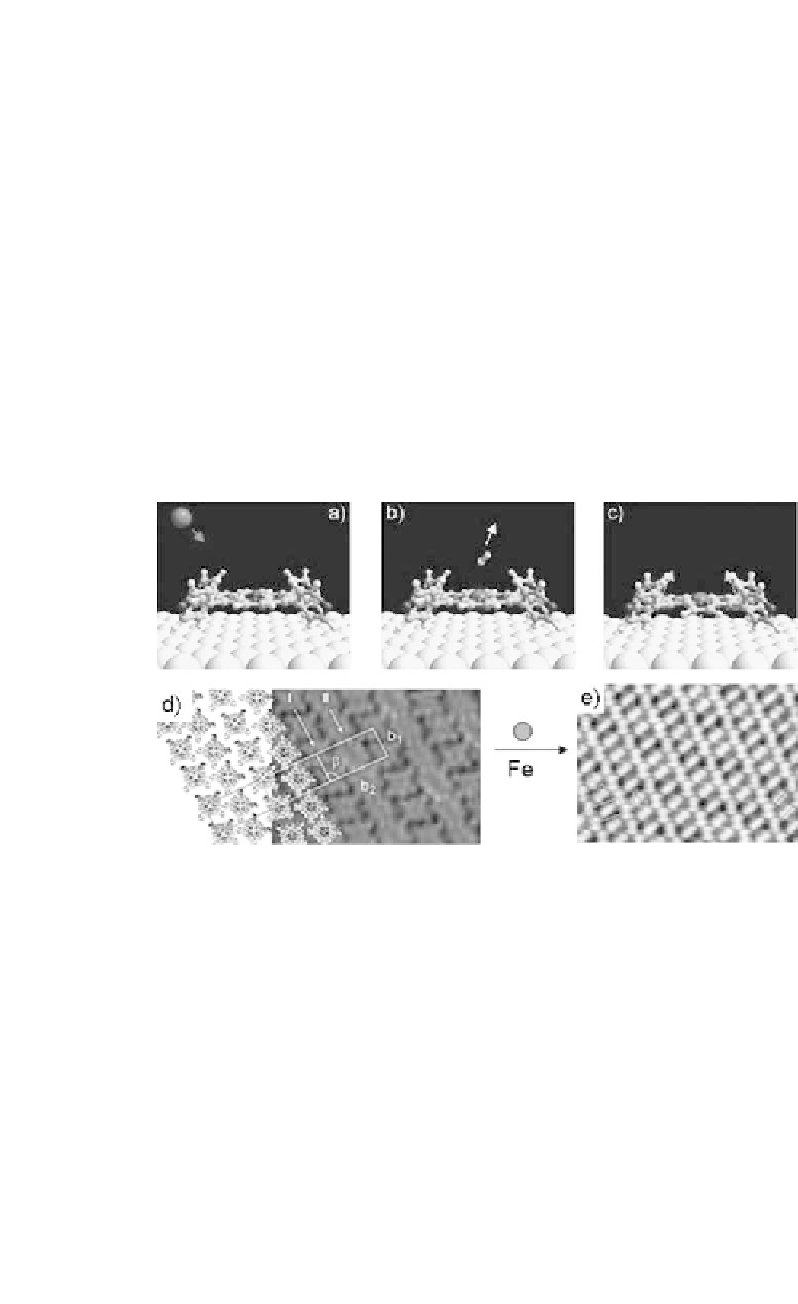Information Technology Reference
In-Depth Information
where the energy gain during the metal ion coordination directed self-assembly is
reduced; this leads to considerably smaller domain sizes on comparable substrates
[27]. Moreover, it was shown that heteroleptic metal ion networks are also
accessible by replacing two dicarboxylic acid ligands with two linear pyridines [30].
The same surface-assisted self-assembly strategy can be applied to different
metal ion-ligand couples. Replacing the dicarboxylic acids with linear biphenols
leads to hexagonal metal ion networks now exhibiting single ion arrangement at
the crossing points. By the same token, the combination of Cobalt ions with linear
bis-dicarbonitrile ligands generates hexagonal networks with domains up to
several hundred nanometer domain sizes (Fig. 12.11) [31]. The symmetry of the
evolving metal ion networks (MINs) has been proven to be independent from the
symmetry of the substrate, so excluding mere templating effects. It was shown that
intrinsic metal ion network symmetry is predominant with respect to the substrate
symmetry. The match or mismatch between substrate and metal ion network
symmetry is expressed by the evolving domain size and defect probability [31].
Figure
12.12.
(a-c) The three main processes during the metallation of surface-
deposited porphyrins on a Ag(111) surface are schematically illustrated: (a) A
pure protonated porphyrin layer is exposed to an iron monomer from an
atomic beam. (b) The pyrrolic protons are reduced to molecular hydrogen which
desorbs while the codeposited Fe(0) is oxidized and incorporated into the
dianionic porphyrinato core. (c) This process is associated with a nonplanar
deformation of the porphyrin macrocycle. (e) STM image and model of the
densely packed monolayer of empty meso-porphyrins on Ag(111) exhibiting the
two different orientations. The models including the unit cell (b
1
=13.9
˚
,
b
2
=27.4
˚
) highlight the structure and facilitate the identification of the
molecular moieties. (e) STM image of the metalated monolayer showing the
unaffected unit cell [32].





Search WWH ::

Custom Search